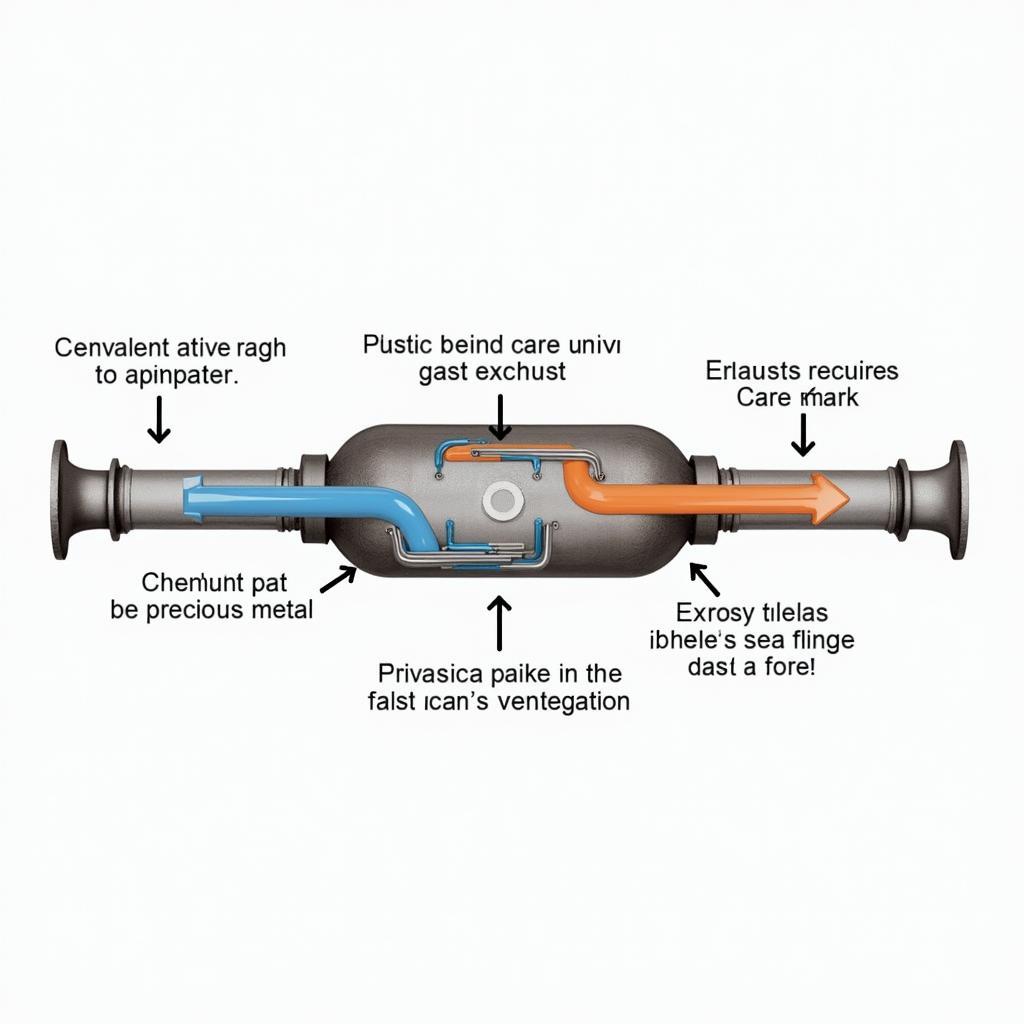The catalytic converter, often shortened to “cat,” is an essential component of every modern vehicle. It plays a crucial role in reducing harmful exhaust emissions, thereby contributing to environmental protection. In this article, you will learn everything you need to know about catalytic converters, from how they work and potential problems to maintenance tips.
What is a Catalytic Converter and How Does it Work?
The catalytic converter transforms harmful exhaust gases into less harmful substances before they are released into the environment. Inside the converter, there are precious metals such as platinum, palladium, and rhodium, which act as catalysts. These precious metals accelerate chemical reactions that convert pollutants into nitrogen, carbon dioxide, and water. For example, toxic carbon monoxide (CO) is converted into non-toxic carbon dioxide (CO2).
 Diagram of how a catalytic converter works
Diagram of how a catalytic converter works
The functionality of a catalytic converter is complex, but fundamentally, it’s an ingenious chemical process. Dr. Hans Müller, a renowned expert in exhaust technology, explains in his book “The Chemistry of the Catalytic Converter”: “The catalytic converter is a masterpiece of engineering that drastically reduces pollutant emissions from vehicles.”
Why is the Catalytic Converter So Important?
The catalytic converter is crucial for environmental protection. Without it, our vehicles would emit significantly more pollutants, which would severely impact air quality. Legal regulations regarding exhaust emissions are strict, and the catalytic converter is an indispensable component for complying with these limits.
Problems with the Catalytic Converter
A defective catalytic converter can cause various problems. These include power loss, increased fuel consumption, and unpleasant odors. A clogged cat can even lead to engine damage. Sometimes, a defective cat becomes noticeable through a rattling noise.
A common reason for problems with the catalytic converter is faulty ignition. If the engine does not ignite properly, unburned fuel enters the catalytic converter and can damage it. Poor quality gasoline can also affect the cat.
Catalytic Converter Maintenance and Repair
Regular maintenance is important to extend the lifespan of the catalytic converter. This includes checking the ignition system and using high-quality fuel. In the event of a defect, the catalytic converter usually needs to be replaced.
Catalytic Converter: Costs and Replacement
The costs for a new catalytic converter vary depending on the vehicle model and manufacturer. Replacement should be carried out by a qualified workshop.
Catalytic Converter and the Environment
The catalytic converter makes a significant contribution to environmental protection by reducing pollutant emissions from vehicles. This is crucial for the health of humans and the environment.
Frequently Asked Questions about Catalytic Converters
- How much does a new catalytic converter cost?
- How long does a catalytic converter last?
- How do I recognize a defective catalytic converter?
- Can a catalytic converter be repaired?
- What are the environmental impacts of a defective cat?
Related Topics
- Exhaust System
- Lambda Sensor
- Engine Control
Need Help with Your Catalytic Converter?
Contact us! Our experts are available 24/7 and are happy to help you. Visit our website autorepairaid.com for more information and personalized advice.
Catalytic Converter: An Indispensable Component
The catalytic converter is a small but important component that makes a significant contribution to environmental protection. By reducing pollutant emissions, it helps to keep the air cleaner.

